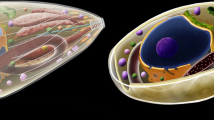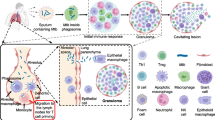Abstract.
Though its lethal effects were ascribed to an exotoxin almost half a century ago, the pathogenesis of anthrax has yet to be satisfactorily explained. Subsequent work has led to the molecular identification and enzymatic characterization of three proteins that constitute two anthrax toxins. Protective antigen binds an as yet unknown cell receptor and mediates the entry of the other two components to the cytoplasm via the endosomal pathway. Edema factor, so named for its ability to induce edema, is a Ca2+/calmodulin-dependent adenylate cyclase. Lethal factor, the dominant virulence factor associated with the toxin, proteolytically inactivates mitogen-activated protein kinase kinases, key players in signal transduction. We describe the fascinating work that has led to these discoveries and discuss their relevance to our understanding of the pathogenesis of anthrax.
Similar content being viewed by others
Author information
Authors and Affiliations
Additional information
Received 6 January 1999; received after revision 8 March 1999; accepted 9 March 1999
Rights and permissions
About this article
Cite this article
Duesbery, N., Vande Woude, G. Anthrax toxins. CMLS, Cell. Mol. Life Sci. 55, 1599–1609 (1999). https://doi.org/10.1007/s000180050399
Issue Date:
DOI: https://doi.org/10.1007/s000180050399




